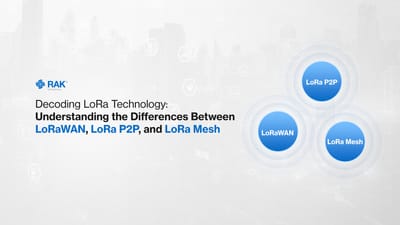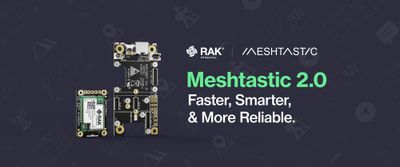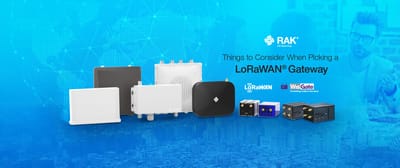Decoding LoRa Technology: Understanding the Differences Between LoRaWAN®, LoRa P2P, and LoRa Mesh
LoRa Technology is essential for the Internet of Things (IoT), making devices work together effectively. This blog post will explain how LoRaWAN, LoRa P2P, and LoRa Mesh are different. Knowing these differences is helpful in choosing the appropriate technology for IoT projects.
What is LoRa Technology?
This technology uses a method called Chirp Spread Spectrum (CSS), which is effective at dodging interference and can send signals through barriers like buildings. This makes it ideal for various applications, from city infrastructure to rural monitoring.
LoRa Technology is important because it allows devices to connect easily, even in remote areas where other networks can't. It helps create smart solutions that enhance our interaction with the world.
Why Choose LoRa Technology?
Choosing LoRa technology not only extends communication over vast distances with minimal power consumption and the ability to overcome physical barriers. It also provides several key advantages:
Secure Communication
Security is a top priority in wireless communication. LoRa technology has encryption to keep the data it sends and receives secure, ensuring sensitive information is protected.
Wide Range of Applications
From agriculture to urban planning, LoRa Technology supports a broad spectrum of uses. Its versatility allows for monitoring and managing resources, tracking assets, and collecting vital data across various industries.
Efficient Network Management
LoRaWAN simplifies managing large networks of devices, making the setup and maintenance of IoT projects more straightforward.
What are the Differences between LoRaWAN, LoRa P2P, and LoRa Mesh?
LoRaWAN
LoRaWAN (or Long Range Wide Area Network) is a protocol within LoRa Technology that allows IoT devices to connect to the internet from far away.
Its ability to support millions of messages from thousands of devices over wide areas makes it perfect for extensive IoT applications. This efficiency is achieved through a well-organized network architecture that includes different classes of operation for devices, depending on their power and communication needs.
LoRaWAN plays a key role in setting up IoT projects.
Read: Everything You Need to Know about LoRaWAN®
LoRa P2P
LoRa P2P (or Peer-to-Peer) refers to two LoRa devices talking directly to each other, unlike in LoRaWAN where they connect through a central server. In LoRa P2P, the devices talk to each other without needing an intermediary, making it suitable for localized applications.
This direct communication method allows for flexible and straightforward deployments, particularly useful in scenarios where devices need to exchange information across short to medium distances directly. It's great for things like remote controls, smart homes, and farm sensors because it uses simple and effective direct communication between devices.
LoRa P2P is valued for its flexibility, allowing adjustments in power, distance, and data speed to suit different projects. It’s a good option for many uses that need LoRa tech on a smaller scale.
LoRa Mesh
LoRa Mesh networking, like the WisBlock Meshtastic Starter Kit, links devices using LoRa technology in a network where they can send and get data through many routes, unlike the straight-line or direct connections of LoRaWAN or LoRa P2P. This structure increases the reliability and range of the network since data can hop from one device to another until it reaches its destination.
This approach is particularly beneficial in challenging environments where direct communication between two points might be obstructed. By having multiple routes available, LoRa Mesh ensures that the message can still get through by simply taking a different path.
LoRa Mesh is well-suited for situations that require building a self-healing network. This method is useful for smart cities, farming, and managing disasters because it keeps connections going without interruption. The mesh network can adjust itself if a device stops working or a new one is added, making it strong and adaptable to changes.
Real-world Applications of LoRa Technology
LoRa technology finds its use across various sectors. Here are some practical examples:
1. Smart Agriculture
Farmers use LoRa technology to check soil wetness and crop condition, helping them use water better and grow more crops.
2. Asset Tracking
Companies track their assets in real-time over long distances, ensuring safety and operational efficiency.
3. Smart Cities
LoRa technology helps control street lights, manage trash collection, and find parking spots, making city life more eco-friendly.
4. Environmental Monitoring
Sensors equipped with LoRa measure air and water quality, providing valuable data for protecting natural resources.
Find real-world use cases at Real IoT Solution Marketplace.
Key Takeaway
LoRa technology offers a flexible and energy-efficient way to connect devices across large distances for the Internet of Things (IoT). It supports various applications, including smart farming and city management, through its several versions like LoRaWAN, LoRa P2P, and LoRa Mesh, helping make our surroundings smarter and more interactive.
This technology plays a key role in creating connected systems that enhance how things work and support a greener future.
Frequently Asked Questions on Lorawan, LoRa P2P, and LoRa Mesh
Is LoRa faster than Wi-Fi?
LoRa technology prioritizes long-distance communication with low power use. It’s good for sending small data over far distances without often changing batteries. Wi-Fi provides fast internet over short distances but uses more power. So, choosing between LoRa and Wi-Fi depends on whether your project needs speed (Wi-Fi) or distance and efficiency (LoRa).
What is the best antenna type for LoRa?
The best antenna for LoRa varies with your project's needs, like distance and setting. Omnidirectional antennas give wide coverage, while directional antennas help with longer distances or tough conditions. Consider antenna gain and frequency compatibility for the best performance. For detailed insights, especially for applications like water metering, you can read our recent blog post: 3 Types of Antennas for Water Metering and Their Pros and Cons
Where to buy devices on Lorawan, LoRa P2P, and LoRa Mesh?
If you're looking to purchase devices for LoRaWAN, LoRa P2P, and LoRa Mesh, check out store.rakwireless.com for a broad range of IoT products.
What is Meshtastic?
Meshtastic uses LoRa technology in an open-source project to build a network for sending small messages and GPS data over long distances with low power. It lets people with the right devices communicate without needing cell service or internet. It’s great for outdoor use, emergencies, and places without usual communication options. Read more: Meshtastic 2.0 – Faster, Smarter, and More Reliable.
Images courtesy of RAKwireless





